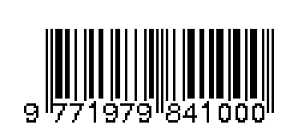SINTESIS KITOSAN SUKSINAT DARI KITOSAN DAN SUKSINAT ANHIDRID SERTA KARAKTERISTIKNYA
DOI:
https://doi.org/10.34151/technoscientia.v7i2.198Keywords:
chitosan, succinate anhydride, chitosan succinateAbstract
The purpose of this study was to determine the effect of molecular weight of chitosan towards the solubility of chitosan succinate in water. The chitosan succinate was synthesized by succinilation method. In the synthesis, chitosan with different molecular weight, low molecular weight (LMW), medium molecular weight (MMW), high molecular weight (HMW) were reacted with succinate anhydride (1:10) for 24 hours. The infrared spectra of chitosan succinate, showed by wavenumber shift, indicating that there has been interaction between chitosan and succinate anhydride. Based on results of analysis of the characterization of chitosan succinate (Analysis of nitrogen,analysis of degree of substitution, and solubility test in water), succinate chitosan HMW (High Molecular Weight) has the highest level of solubility. At temperature of 800C, it dissolves until 99.34% of solubility, the succinate chitosan has 2.98% of nitrogent content, and 0.60 of degree of substitution. From this research can be inferred that larger molecular weight of chitosan can lead into a higheer degree of substitution and solubility values in water.
References
Baxter, S. Zivanovic, S. and Weiss. J. 2005. Molecular Weight and Degree of Acetylation of High-Intensity Ultrasonicated Chito-san. Food Hydrocolloids. Vol. 19 : 821-830.
Direktorat Jenderal Pengawassan Obat dan Makanan. 1995. Farmakope Indonesia. Edisi IV. Departemen Kesehatan Republik Indonesia.
Dwiyitno, J. Basmal dan Mulyasari, 2004. Pengaruh Suhu Esterifikasi terhadap Karakteristik Karboksil-metil Kitosan (CMCts). Jurn. Pen. Perikanan Indonesia. Edisi Pas-ca Panen. Badan Riset Kelautan dan Perikanan, DKP. Jakarta. Vol. 9 : 229-233.
Fouda, M. M. G. 2005. Use of Natural Polysaccharides in Medical Textile Applications. Disertasi. Fachbereich Chemie Universitas Duisburg-Essen. Germany.
Hayes, E. R. 1986. NO-Carboxymethyl Chitosan and Preparative Me-thod. US Patens. Vol. 4: 699-719.
Hirano S., Yasuhiro Yamaguchi and Mitsutomo. 2003. Water Soluble N-(n-Fatty Acyl) Chitosan Macro-mol. J-Biosci. Vol 6: 191.
Kamil, Ikhsan. 2010. Kajian Pengaruh Berat Molekul dan Konsentrasi terhadap Kestabilan Lapisan Kitosan pada Kain Katun. Skripsi. FMIPA UNLAM. Banjarbaru.
Khan, A.T., Khiang, P. K. and Seng, C. H. 2002. Reporting Degree of Deacetylation Values of chitosan: The Influence of Analytical Methods. J. Pharm Pharmaceut Sci. Vol. 5: 205-212.
Kim S. F. 2004. Physicochemical and Functional Properties of Crawfish Chitosan as Affected by Different Processing Protocols. Tesis. Departement of Food Science Louisiana State University.
Knorr D. 1982. Function Properties of Chitin and Chitosan. J.Food.Sci. Vol. 47: 36.
Lim, S. 2002. Synthesis of a Fiber-reactive Chitosan Derivative and Its Application to Cotton Fabric as an Antimicrobial Finish and Dyeing-improving Agent. Thesis. Department of Fiber and Polymer Science, North Caroline State University.
Liu N., Xi-Guang, C., Hyun-Jin P., Chen-Guang, L., Cheng-Sheng, L, Xiang-Hong, M. and Le-Jun, Y. 2006. Effect of MW and Con-centration of Chitosan on Anti-bacterial Activity of Escherichia coli. Carbohydr. Polym. Vol. 64: 60-65.
Meidina, Sogiono, Jenie, S. L., dan Suhartono M. T. 2006. Aktivitas Antibakteri Oligomer Kitosan yang Diproduksi Menggunakan Kitonase dari Isolat B. lichenifor-mis MB-2. Makalah program Hibah Kompetensi B, Depar-temen Teknologi Pangan dan Gizi, Bogor.
Mobarak, N.N. dan Abdullah, P. 2010. Synthesis and Characterization of Several Lauryl Chitosan Derivatives. The Malaysian Jour-nal of Analytical Sciences. Vol 14 No 2: 82 – 99.
Muzzarelli. 1985. “Studies on the Suitab-le of Chitinocistic Microorganism for Shrimp Waste Fermentation”. Disertasi. University of Washing-ton, New York.
Muzzarelli dan M.G. Peter. 1997. Chitin Handbook. European Chitin So-ciety. Italy. 109-132.
No, H. K. Lee, S. H., Park, N. Y. and Meyers S. P. 2003. Comparison of Physicochemical, Binding and Antibacterial Properties of Chito-san prepared without and with Deproteinization Process. J. Agr. Food Chem. Vol. 51: 7659-7663.
Noerati, Radjiman C. L., Achmad S., and Ariwahjoedi B. 2007. Sintesis Kitosan Suksinat Larut Air. Akta Kimindo. Vol. 2: 113 – 116
Park, K. 2001. Chitosan Processing: Influence of Process Parameters during Acidic and Alkaline Hydrolysis and Effect of The Processing Sequence on The Resultant Chitosan’s Properties. Journal of Applied Polymer Science. Vol 80: 483-488.
Rahmadhani, A. 2010. Pengaruh Regenerasi Larutan Naoh terhadap Derajat Deasetilasi dan Berat Molekul Kitosan pada Proses Deasetilasi Kitin Secara Bertahap. Skripsi. FMIPA UNLAM. Banjarbaru.







